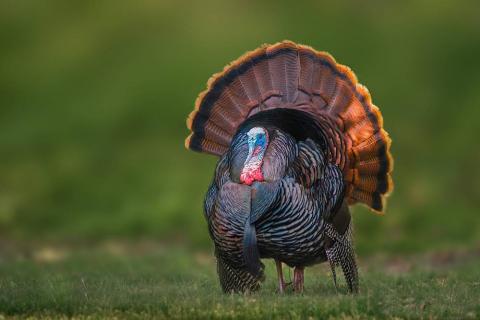Heath Wood

Once a ground blind is in place and staked down ready to hunt, the next step is brushing in the blind. Some will argue that most ground blinds come with a camouflage pattern on the outside already and that there is no need to do anymore. However, Mossy Oak’s Cuz Strickland says that “it is not so much about hiding the blind; it is about making the camouflage patterns work better by breaking up the shape.”
When one hears the words brushing in a blind, this doesn’t mean completely cover the ground blind with brush, it means to break up outlines and shapes so that the blind blends in with the surroundings.
Once the blind is staked and tied down securely, one can take a small hand saw, chopping ax or a chainsaw to help gather brush to use to blend in the ground blind. Cut several small branches or small pieces of brush then place them around the blind. Some blinds come with small loops that are located in a straight line all the way around the top of the blind. These are for holding small branches in place. Place three to five branches on each side, a few on top of the blind, then place some smaller pieces around the blind that are stuck into the ground or held up by rope that is there to help anchor the blind in to place. Not only does the rope help keep the blind upright but it also gives support for more branches or brush. By brushing in a blind, it prevents the ground blind from looking like a big box in the woods. Putting branches/brush on and around the blind provides a 3D look that helps the camouflage pattern work to its full potential.
When brushing in a ground blind, there are a few of factors to keep in mind. First, do not obstruct any shooting lanes that might get in the way of an arrow or a bullet when a shot opportunity is given. The second thing is to remember not to place any sharp points of the brush towards the fabric of the blind; this will prevent puncturing fabric during high winds. The last thing to remember is to use pieces of brush that are natural to the surroundings. For example, if a ground blind is sitting in the middle of a pine tree thicket, don’t brush in the blind with a bunch of corn stalks, as it doesn’t look natural. Use pieces of nearby trees or pieces of brush that are on the ground that look familiar to the background and surrounding views of where the blind is located. This, too, will help the camouflage pattern work to its potential as well as help break up outlines of the ground blind successfully.
Brushing in a ground blinds needs to be done several weeks before hunting. This gives time for the animals to get used to the blind, as well as allows time for all human scent to leave the area so that when it comes time to hunt, everything is in its natural setting to provide better hunting.



























